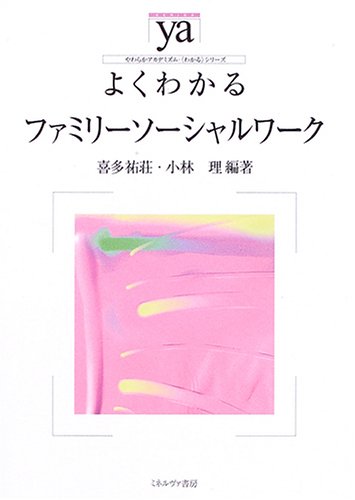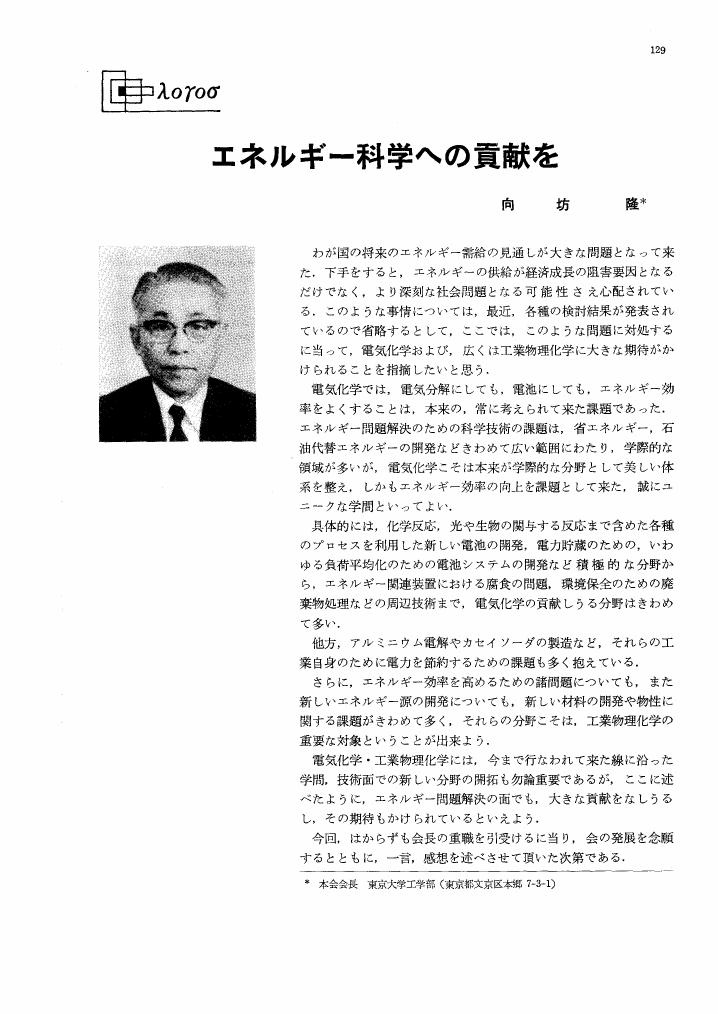1 0 0 0 増殖するブッダ:韓国仏教の物質化
- 著者
- 岡田 浩樹
- 出版者
- 日本文化人類学会
- 雑誌
- 日本文化人類学会研究大会発表要旨集
- 巻号頁・発行日
- vol.2008, pp.19, 2008
1990年代後半より、韓国仏教において「増殖するブッダ」とも言える興味深い現象が見いだせるようになった。韓国仏教における中心的な礼拝対象である聖なる仏陀(プッチョニム)が、カリカチュライズされ、様々なキャラクターグッズとして複製化される。本発表ではこの現象を「増殖するブッダ」としてとらえ、今日の複製化時代における<わたし(信者)>と<イコン(外部)>の関係性を検討する。
1 0 0 0 IR 礼拝像と奇跡--東西比較の試み (公開・国際シンポジウム 礼拝像と奇跡 東西比較の試み)
- 著者
- 秋山 聰
- 出版者
- 東京大学グローバルCOEプログラム「死生学の展開と組織化」
- 雑誌
- 死生学研究 (ISSN:18826024)
- 巻号頁・発行日
- no.12, pp.274-267, 2009-10
公開・国際シンポジウム 死生と造形文化Ⅱ「礼拝像と奇跡 -東西比較の試み」
- 著者
- 加須屋 誠
- 出版者
- 東京大学グローバルCOEプログラム「死生学の展開と組織化」
- 雑誌
- 死生学研究 (ISSN:18826024)
- 巻号頁・発行日
- no.12, pp.211-190, 2009-10
公開・国際シンポジウム 死生と造形文化Ⅱ「礼拝像と奇跡 -東西比較の試み」
1 0 0 0 IR はじめに
- 著者
- 秋山 聰 冨澤 かな
- 出版者
- 東京大学グローバルCOEプログラム「死生学の展開と組織化」
- 雑誌
- 死生学研究 (ISSN:18826024)
- 巻号頁・発行日
- no.12, pp.275(2)-276(1), 2009-10-31
公開・国際シンポジウム 死生と造形文化Ⅱ「礼拝像と奇跡 -東西比較の試み」
- 著者
- KarmaChags-med 中御門 敬教
- 出版者
- 佛教大学総合研究所
- 雑誌
- 仏教大学総合研究所紀要 (ISSN:13405942)
- 巻号頁・発行日
- no.18, pp.31-46, 2011-03
カギュ派,ニンマ派の学者・行者カルマ・チャクメー(ラーガアスヤ.1612.1678)著『大楽誓願』は,ゲルク派の祖ツォンカパ(1357.1419)著『最上国開門』とともに,チベット仏教におけ最も広く普及した極楽願文であり,宗教的だけでなく文化的にも重要である。チャクメーの極楽願文は,彼が指導した活仏ミギュル・ドルジェ(1645.1667)が無量光三尊を見て教えられたという虚空法(天空法)の法類に所属しており,それらの儀式や法要において大きな役割を果たすとともに,宗派や儀式を越えて広く用いられた。本稿においては,藤仲孝司氏との協力のもと,礼拝対象である観自在と大勢至の両脇侍と極楽浄土の特性と,彼らに対する供養に関する部分を,翻訳研究したカルマ・チャクメー(ラーガアスヤ)極楽願文虚空法『清浄大楽国土誓願(大楽誓願)』ミギュル・ドルジェ
- 著者
- KarmaChags-med 藤仲 孝司
- 出版者
- 佛教大学総合研究所
- 雑誌
- 仏教大学総合研究所紀要 (ISSN:13405942)
- 巻号頁・発行日
- no.18, pp.47-61, 2011-03
カギュ派,ニンマ派の学者・行者カルマ・チャクメー(ラーガアスヤ.1612.1678)著『大楽誓願』は,ゲルク派の祖ツォンカパ(1357.1419)著『最上国開門』とともに,チベット仏教における最も高名で普及した極楽願文であり,宗教的だけでなく文化的にも重要である。チャクメーの極楽願文は,彼が指導した活仏ミギュル・ドルジェ(1645.1667)が無量光三尊を見て教えられたという埋蔵経「虚空法(天空法)」に所属しており,それらの儀式や法要において大きな役割を果たすとともに,宗派や儀式を越えて広く用いられた。本稿においては,中御門敬教氏との協力のもと,この極楽願文の概説を行い,序分と観想,礼拝対象である無量光仏に関する部分を,翻訳研究した。カルマ・チャクメー(ラーガアスヤ)極楽願文虚空法『清浄大楽国土誓願(大楽誓願)』ミギュル・ドルジェ
- 著者
- 井手 誠之輔
- 出版者
- 東京大学大学院人文社会系研究科グローバルCOEプログラム「死生学の展開と組織化」
- 雑誌
- 死生学研究 (ISSN:18826024)
- 巻号頁・発行日
- no.16, pp.237-216, 2011-10
公開・国際シンポジウム「イメージとヴィジョン : 東西比較の試み」
1 0 0 0 IR 明恵の三時三宝礼拝 再考
- 著者
- 髙橋 寿光
- 雑誌
- 綜合仏教研究所年報 = ANNUAL OF THE INSTITUTE FOR COMPREHENSIVE STUDIES OF BUDDHISM TAISHO UNIVERSITY (ISSN:0388645X)
- 巻号頁・発行日
- no.35, pp.293, 2013-03-31
1 0 0 0 道元禅師の結界観
- 著者
- 西澤 まゆみ
- 出版者
- 日本印度学仏教学会
- 雑誌
- 印度學佛教學研究 (ISSN:00194344)
- 巻号頁・発行日
- vol.63, no.1, pp.214-217, 2014
- 著者
- 中村 優花 岡崎 甚幸
- 出版者
- 日本建築学会
- 雑誌
- 日本建築学会計画系論文集 (ISSN:13404210)
- 巻号頁・発行日
- no.754, pp.2441-2451, 2018-12
This study is to analyze the types of spatial composition within Buddhist shrines. The focus was on the spatial composition, the plan forms and the arrangement of worship objects (stupas and Buddhist statues). This research is based on 55 documented Buddhist temples in Central Asia. The shrine architectures have been divided into 4 types based on spatial compositions. The meanings of spatial composition also have been discussed by conjecturing how worship acts were performed in shrine architectures. For the purpose of this study, Central Asia is defined as: northern Pakistan, Afghanistan, Uzbekistan, Tajikistan, Kyrgyzstan, Turkmenistan and Xinjiang Uyghur (Fig. 1).<br> The plan forms were divided into the following types: single chamber, two-celled chamber which has main chamber and ante-chamber (having wing walls and without wing walls type), and the corridor type (a main chamber enclosed by a single wall/ two-celled chamber enclosed by a single wall) (Fig. 2). According to the classification of plan forms, the arrangement of worship objects was classified as I, II, III, and IV. The spatial compositions were analyzed based on the schemas. The shrine architectures have been divided into 4 types as the follows (Fig. 3):<br> I. Worshippers face worship object inside or outside the chamber: Worshippers do not enter inside, and face to the worship object directly; Worshippers enter inside directly without wing walls, judging from its large scale; Worshippers enter inside through wing walls, judging from its large scale and the spatial composition.<br> II. Shrine with axiality: the worship object is located at the further end of the shrine (in some cases, center of the shrine). There is the symbolic direction to the worship object. Worshippers face the worship object.<br> III. Shrine with circumambulatory: the worship object is housed in the center of the main chamber. Accordingly, pradak?i?a (Buddhist devotional practice) is performed.<br> IV. Shrine with centrality: the worship objects are placed on three sides or four sides of the main chamber. The plan forms of shrines are centralized plan such as a square and a cruciform.<br> Axiality is a common characteristic in many shrine architectures. Axiality is necessarily component in the case of the two-celled chamber type shrines. In addition, it became clear that there is the shrine architecture includes some characteristics of spatial composition: axiality + circumambulatory, and axiality + circumambulatory + centrality.<br> Over a long period of time, circumambulatory design was adopted for wide areas because it indicated the circumambulation ritual from left to right of the worship object. On the other hand, there were few examples of shrine architectures with centrality. It has been conjectured that centrality was a determinate factor judging from the aspect of geographical distribution. Based on the analysis, the meaning of the spatial compositions was considered. The conclusions are as follows:<br> - Shrines with axiality means that the Buddhist world continues forward.<br> - Shrines with circumambulatory were held for service of the cosmological Buddha.<br> - Shrines with centrality had worshippers enclosed by the Buddhist world.<br> It could be considered that “circumambulatory” and “centrality” is contrasting characteristics of spatial composition and suggests a change of meaning in the shrine architecture.
1 0 0 0 熊野参詣道伊勢路における礼拝施設の歴史的変化からみた管理運営方法
- 著者
- 伊藤 文彦
- 出版者
- 公益社団法人 日本造園学会
- 雑誌
- ランドスケープ研究 (ISSN:13408984)
- 巻号頁・発行日
- vol.83, no.5, pp.703-708, 2020
<p>In recent years, it has been often discussed that the community should take part in heritage conservation. But, when a community manages heritage, the historical relationship between the heritage and the community needs to be considered. This study aims to clarify the historical change in the management of cultural heritage, using the example of Ishibutsuan temple along the Kumano pilgrimage route Iseji and based on a literature survey, the analysis of the space structure, and the distribution of the donors. The results show that, in the pre-modern period, Ishibutsuan temple relied on pilgrims and relevant people because the pilgrimage was flourishing then. After the middle of the 19th century, walking pilgrims had disappeared due to the development of the modern transportation system. Therefore, the temple established monuments of local people and acquired the worship of the local community. After the inscription of Iseji on the World Heritage list, the number of walking tourists increased slightly. In conclusion, tourists must contribute to management as was the case in the pre-modern period. Also, Ishibutusuan temple needs to reconstruct the space structure to attract tourists. For instance, it can incorporate a resting place like the one that existed in the past.</p>
1 0 0 0 IR 古代仏教寺院の礼拝空間と礼拝石
- 著者
- 光森 正士
- 出版者
- 奈良大学文学部文化財学科
- 雑誌
- 文化財学報 (ISSN:09191518)
- 巻号頁・発行日
- vol.16, pp.15-54, 1998-03
初期仏教々団、つまり僧伽は釈尊を中心として比丘、比丘尼らで構成されていた。しかし、後には在家の人びと優婆塞、優婆夷なども仏教に帰依するものが多くなって次第に大きく発展した。初期教団にては比丘や比丘尼たちは一定の土地に留まり、固定的に生活するというのではなく、常に各地を転々とする移動集団であり、絶えず移住する生活の連続であった。このことはある地域に対する執着を離れることにもなり、また、地域に密着する私的感情を断ち切ることであり、愛着をつのらせることも避けた。
1 0 0 0 よくわかるファミリーソーシャルワーク
- 著者
- 喜多祐荘 小林理編著
- 出版者
- ミネルヴァ書房
- 巻号頁・発行日
- 2005
1 0 0 0 OA 1938年11月「帝国水晶の夜」をめぐる帝国報道指令とオーストリア新聞
- 著者
- 嶋田 直子
- 出版者
- 早稲田大学大学院文学研究科
- 雑誌
- 早稲田大学大学院文学研究科紀要 (ISSN:24327344)
- 巻号頁・発行日
- vol.65, pp.293-309, 2020-03-15
1 0 0 0 OA 創造・発明への道
- 著者
- 山崎 貞一
- 出版者
- 公益社団法人 電気化学会
- 雑誌
- 電気化学および工業物理化学 (ISSN:03669297)
- 巻号頁・発行日
- vol.47, no.5, pp.273, 1979-05-05 (Released:2019-11-14)
1 0 0 0 OA エネルギー科学への貢献を
- 著者
- 向坊 隆
- 出版者
- 公益社団法人 電気化学会
- 雑誌
- 電気化学および工業物理化学 (ISSN:03669297)
- 巻号頁・発行日
- vol.45, no.3, pp.129, 1977-03-05 (Released:2019-11-15)
- 著者
- 楢原 毅
- 出版者
- 小学館
- 雑誌
- 総合教育技術 (ISSN:09110526)
- 巻号頁・発行日
- vol.71, no.8, pp.61-63, 2016-09
1 0 0 0 OA 都市コンパクト化政策に対する都市計画行政担当者の態度形成・変容分析
- 著者
- 谷口 守 芝池 綾
- 出版者
- 公益社団法人 土木学会
- 雑誌
- 土木学会論文集D (ISSN:18806058)
- 巻号頁・発行日
- vol.64, no.4, pp.608-616, 2008 (Released:2008-12-19)
- 参考文献数
- 18
交通環境負荷低減のため,都市構造をコンパクト化することが期待されている.本研究では,その役割を最前線で担う地方自治体の都市計画行政担当者を広く対象とし,コンパクト化政策の意義と可能性を伝えるワンショット型レクチャー(OL)を通じて,1) 担当者の態度形成の現状,2) 担当者の態度変容,3) 態度形成の要因分析,4) 行動のための障害を明らかにした.分析の結果,1) 現状では低い態度水準がOLを通じて大きく向上すること,2) 態度形成にはOLの他に知識や経験が深く関与すること,3) 実際に取り組む者ほど現在の「制度」を障害とはせず,4) 実現のための様々な障害も多くはコミュニケーションと学習を通じて解消される可能性があることが示された.


